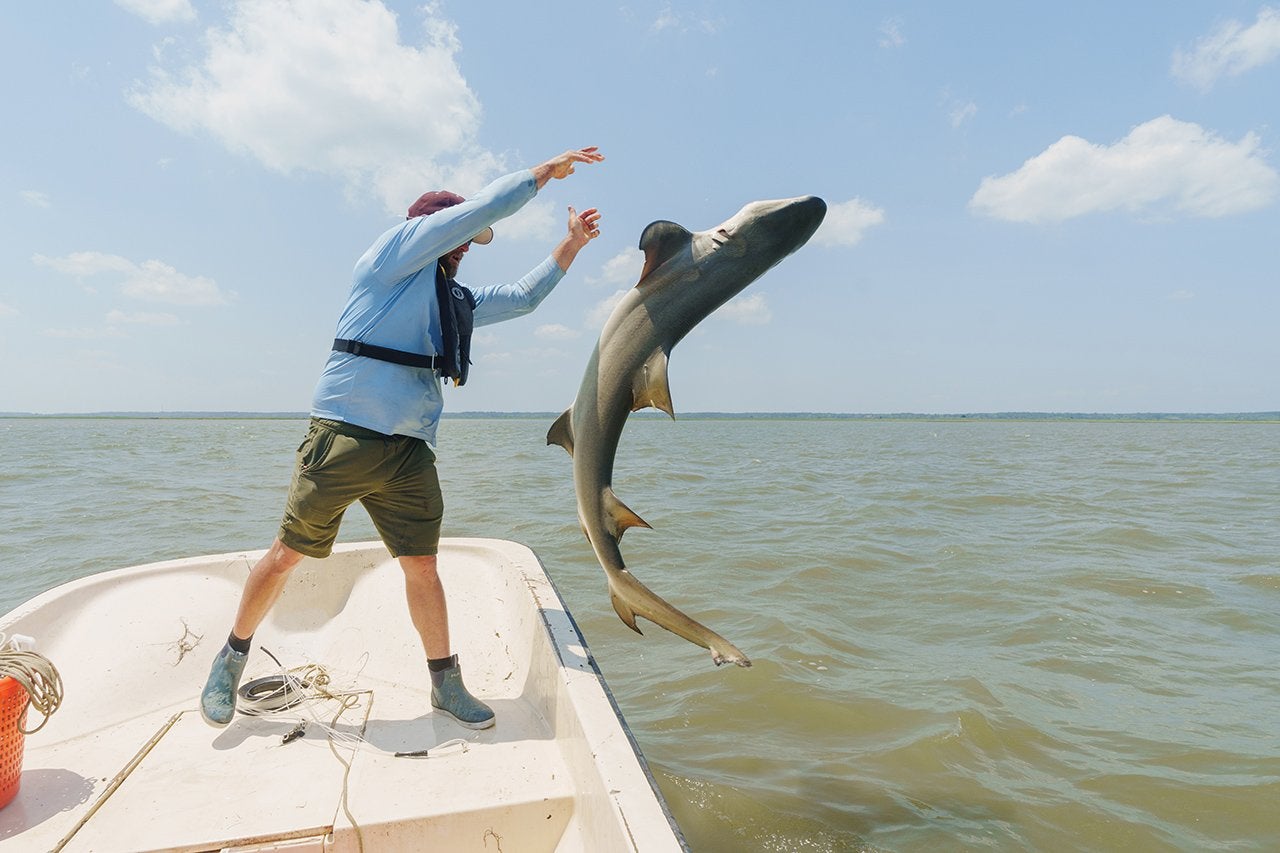When you hear the word shark, what comes to mind?
Most people think of Steven Spielberg’s 1975 movie Jaws (still!), which featured a killer shark unleashing chaos on a beach community off of Long Island, New York.
Bryan Frazier ’00 (M.S. ’13) says a homicidal shark is just one of many myths that surround these apex predators. He should know. He has been studying sharks for more than 20 years.
Frazier started working for the South Carolina Department of Natural Resources as a marine biologist soon after graduating from the College in 2000. Thirteen years later, he earned a master’s degree in marine biology from the College and headed a group of researchers who studied sharks along the South Carolina coast.
Frazier’s shark research focuses on many issues, including the life cycle of sharks (how long sharks live, how often they reproduce and how many offspring they have), movement ecology (what areas are most critical to a particular species) and post-release mortality (how sharks deal with the stress of being captured and released within recreational and commercial fisheries). He also collaborates with colleagues to investigate other aspects of shark research, including diet/trophic ecology, genetics, contaminant analysis, morphology, reproductive endocrinology and more.

From top: Frazier releases a tagged juvenile lemon shark in Bulls Bay; Frazier; pointing out the prominent dorsal fin of the sandbar shark, which is slow growing but can live up to 40 years; biologist Ashley Galloway ’13 measures a juvenile lemon shark. (Photos by Mike Ledford)
In all, Frazier’s research has appeared in over 30 science publications covering at least 14 different species of sharks in the waters of South Carolina. He’s also an expert in shark mythology.
At the top of that list is that sharks are man-eating, bloodthirsty creatures. Sharks do not naturally hunt humans. In fact, over 75% of all shark species will almost never encounter a human being and are incapable of consuming a human anyway.
“The chance of swimming at the beach and getting bit is a very rare occurrence,” says Frazier. “In South Carolina, we average about four bites a year. When you think about how many people are in the water on a typical day, you can see how rare this event is.”
Shark-related fatalities in South Carolina are even rarer – the last reported shark-related death in South Carolina was in the 1850s. “I certainly don’t worry about it, and I regularly swim where I know a lot of sharks are,” says Frazier with a laugh.
Another misconception: All sharks are alike. The most abundant shark along the South Carolina coast is the Atlantic sharpnose shark, which grows to an average of 38 inches. Compare that to a large ocean predator like a white shark that can grow to over 16 feet.
Frazier understands why there is so much misinformation swirling around sharks: “A lot of people fear what they cannot see,” he says.





